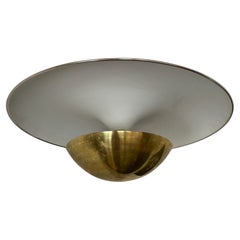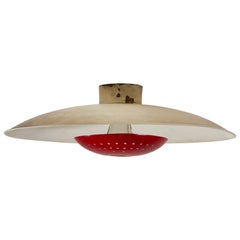Gino Sarfatti Model 155
Vintage 1950s Italian Mid-Century Modern Flush Mount
Metal, Brass
Recent Sales
Vintage 1950s Italian Mid-Century Modern Flush Mount
Brass, Metal
Vintage 1950s Italian Mid-Century Modern Flush Mount
Brass, Aluminum
Vintage 1950s Italian Mid-Century Modern Flush Mount
Metal, Brass
Vintage 1950s Italian Mid-Century Modern Flush Mount
Aluminum, Brass
Vintage 1950s Italian Mid-Century Modern Flush Mount
Aluminum, Brass
Vintage 1950s Italian Mid-Century Modern Flush Mount
Aluminum, Brass
Vintage 1950s Italian Mid-Century Modern Flush Mount
Metal, Brass
Vintage 1950s Italian Mid-Century Modern Flush Mount
Aluminum, Brass
Vintage 1950s Italian Mid-Century Modern Flush Mount
Aluminum, Brass
Vintage 1950s German Art Deco Flush Mount
Metal, Brass
Mid-20th Century Italian Mid-Century Modern Flush Mount
Metal, Brass
Vintage 1950s Italian Mid-Century Modern Chandeliers and Pendants
Metal, Brass
People Also Browsed
Vintage 1960s Danish Mid-Century Modern Chairs
Wood
2010s Italian Mid-Century Modern Wall Lights and Sconces
Brass
2010s Italian Mid-Century Modern Chandeliers and Pendants
Brass
Vintage 1950s German Mid-Century Modern Stools
Metal
21st Century and Contemporary Finnish Scandinavian Modern Chandeliers an...
Metal
21st Century and Contemporary American Mid-Century Modern Wall Lights an...
Brass
21st Century and Contemporary Mexican Mid-Century Modern Table Lamps
Clay, Linen
21st Century and Contemporary Portuguese Art Deco Chandeliers and Pendants
Metal
2010s British Mid-Century Modern Wall Mirrors
Brass, Bronze
2010s Italian Mid-Century Modern Wall Lights and Sconces
Brass
21st Century and Contemporary American Scandinavian Modern Wall Lights a...
Gold, Brass
21st Century and Contemporary American Modern Chandeliers and Pendants
Metal
21st Century and Contemporary Spanish Minimalist Side Tables
Marble, Travertine
21st Century and Contemporary American Mid-Century Modern Wall Lights an...
Brass
21st Century and Contemporary Italian Mid-Century Modern Sideboards
Travertine
2010s Finnish Post-Modern Stools
Ash, Cork
Arteluce for sale on 1stDibs
The lighting maker Arteluce was one of the companies at the heart of the creative explosion in postwar Italian design. The firm’s founder and guiding spirit, Gino Sarfatti (1912–85), was an incessant technical and stylistic innovator who almost single-handedly reinvented the chandelier as a modernist lighting form.
Sarfatti attended the University of Genoa to study aeronautical engineering but was forced to drop out when his father’s company went out of business. His mechanical instincts led him to turn his attention to lighting design — and he founded Arteluce as a small workshop in Milan in 1939. Sarfatti’s father was a Jew, so the family fled to Switzerland in 1943, but after the war — largely thanks to Sarfatti’s insistence on efficiency of design and manufacture — Arteluce quickly established itself as a top firm.
Though Sarfatti continued as chief designer through the 1950s and ’60s, he also enlisted other designers such as Franco Albini and Massimo Vignelli to contribute work. Sarfatti sold Arteluce to FLOS — a rival Italian lighting maker — in 1973 and retired to pursue a more traditional avocation: collecting and dealing rare postage stamps.
Sarfatti is regarded by many collectors as a pioneer of minimalist design. He pared down his lighting works to their essentials, focusing on practical aspects such as flexibility of use. His most famous light, the 2097 chandelier, is a brilliant example of reductive modernist design, featuring a central cylinder from which branches numerous supporting fixtures extending like spokes on a wheel.
Similarly, Sarfatti's 566 table lamp is a simple canister, able to be raised or lowered on a stem, holding a half-chrome bulb. Despite the marked functionality of his designs, Sarfatti did have a sprightly side: His 534 table lamp, with its cluster of rounded enameled shades, resembles a vase full of flowers, the Sputnik chandelier (model 2003) was inspired by fireworks and the brightly colored plastic disks of the 2072 chandelier look like lollipops. No matter the style, Sarfatti concentrated first and foremost on the character of light created — and any Arteluce lamp is a modernist masterpiece.
Find vintage Arteluce table lamps, chandeliers, floor lamps and other lighting on 1stDibs.
A Close Look at Mid-century Modern Furniture
Organically shaped, clean-lined and elegantly simple are three terms that well describe vintage mid-century modern furniture. The style, which emerged primarily in the years following World War II, is characterized by pieces that were conceived and made in an energetic, optimistic spirit by creators who believed that good design was an essential part of good living.
ORIGINS OF MID-CENTURY MODERN FURNITURE DESIGN
- Emerged during the mid-20th century
- Informed by European modernism, Bauhaus, International style, Scandinavian modernism and Frank Lloyd Wright’s architecture
- A heyday of innovation in postwar America
- Experimentation with new ideas, new materials and new forms flourished in Scandinavia, Italy, the former Czechoslovakia and elsewhere in Europe
CHARACTERISTICS OF MID-CENTURY MODERN FURNITURE DESIGN
- Simplicity, organic forms, clean lines
- A blend of neutral and bold Pop art colors
- Use of natural and man-made materials — alluring woods such as teak, rosewood and oak; steel, fiberglass and molded plywood
- Light-filled spaces with colorful upholstery
- Glass walls and an emphasis on the outdoors
- Promotion of functionality
MID-CENTURY MODERN FURNITURE DESIGNERS TO KNOW
- Charles and Ray Eames
- Eero Saarinen
- Milo Baughman
- Florence Knoll
- Harry Bertoia
- Isamu Noguchi
- George Nelson
- Danish modernists Hans Wegner and Arne Jacobsen, whose emphasis on natural materials and craftsmanship influenced American designers and vice versa
ICONIC MID-CENTURY MODERN FURNITURE DESIGNS
- Eames lounge chair
- Nelson daybed
- Florence Knoll sofa
- Egg chair
- Womb chair
- Noguchi coffee table
- Barcelona chair
VINTAGE MID-CENTURY MODERN FURNITURE ON 1STDIBS
The mid-century modern era saw leagues of postwar American architects and designers animated by new ideas and new technology. The lean, functionalist International-style architecture of Le Corbusier and Bauhaus eminences Ludwig Mies van der Rohe and Walter Gropius had been promoted in the United States during the 1930s by Philip Johnson and others. New building techniques, such as “post-and-beam” construction, allowed the International-style schemes to be realized on a small scale in open-plan houses with long walls of glass.
Materials developed for wartime use became available for domestic goods and were incorporated into mid-century modern furniture designs. Charles and Ray Eames and Eero Saarinen, who had experimented extensively with molded plywood, eagerly embraced fiberglass for pieces such as the La Chaise and the Womb chair, respectively.
Architect, writer and designer George Nelson created with his team shades for the Bubble lamp using a new translucent polymer skin and, as design director at Herman Miller, recruited the Eameses, Alexander Girard and others for projects at the legendary Michigan furniture manufacturer.
Harry Bertoia and Isamu Noguchi devised chairs and tables built of wire mesh and wire struts. Materials were repurposed too: The Danish-born designer Jens Risom created a line of chairs using surplus parachute straps for webbed seats and backrests.
The Risom lounge chair was among the first pieces of furniture commissioned and produced by celebrated manufacturer Knoll, a chief influencer in the rise of modern design in the United States, thanks to the work of Florence Knoll, the pioneering architect and designer who made the firm a leader in its field. The seating that Knoll created for office spaces — as well as pieces designed by Florence initially for commercial clients — soon became desirable for the home.
As the demand for casual, uncluttered furnishings grew, more mid-century furniture designers caught the spirit.
Classically oriented creators such as Edward Wormley, house designer for Dunbar Inc., offered such pieces as the sinuous Listen to Me chaise; the British expatriate T.H. Robsjohn-Gibbings switched gears, creating items such as the tiered, biomorphic Mesa table. There were Young Turks such as Paul McCobb, who designed holistic groups of sleek, blond wood furniture, and Milo Baughman, who espoused a West Coast aesthetic in minimalist teak dining tables and lushly upholstered chairs and sofas with angular steel frames.
Generations turn over, and mid-century modern remains arguably the most popular style going. As the collection of vintage mid-century modern chairs, dressers, coffee tables and other furniture for the living room, dining room, bedroom and elsewhere on 1stDibs demonstrates, this period saw one of the most delightful and dramatic flowerings of creativity in design history.
Finding the Right Flush-mount-ceiling-lights for You
Antique and vintage flush mount lighting fixtures can help you create inviting, ambient lighting in your space, and who doesn’t want that?
While electric light bulbs were a huge improvement over gas and oil lamps for lighting our homes, we still had much work to do in order to arrive at the broad range of table lamps, pendants, sconces and other fixtures that are available today.
Lighting technology and design improved substantially over time. Engaging engineers, scientists, architects and designers alike, the field of lighting became a major proving ground for state-of-the-art materials like plastics, inventive new mechanisms and emotionally resonant styles that included the ethereal (Isamu Noguchi’s Akari light sculpture), the whimsical (Gino Sarfatti’s 2109 ceiling light and Sputnik chandelier) and the eclectically postmodern (the Toio floor lamp crafted by Achille and Pier Giacomo Castiglioni). Eventually, flush mount light fixtures became a practical option for home lighting.
Flush mount lighting fixtures are among the most convenient ways to light a small room with a low ceiling. These structures sit directly against the ceiling’s surface and cast light downward, illuminating a large area and defining the room. Semi-flush mount lighting fixtures hang several inches from the ceiling. They also produce ambient light but can be a little more decorative and lean toward the style of chandeliers.
Flush mount lighting is versatile. Larger fixtures distribute more ambient light across the center of the room, while smaller flush mount fixtures are best for accent or task lighting. The main drawback of flush mount fixtures is that they don’t make a strong statement. You can remedy this by strategically arranging decorative accents that flourish in soft lighting.
Lighting is an essential part of any interior design project. Often, having the right light fixture is key to creating an attractive, radiant room. Ample lighting paired with enticing design creates an elevated, inviting atmosphere, helping to set the desired mood. Selecting the right lighting for your home, however, isn’t merely about creating an especially bright bedroom or a moody dining room. There are many different kinds of fixtures and illumination to consider, with flush mount lighting fixtures among them.
Make a statement with a<a href=/furniture/lighting/flush-mount-ceiling-lights/material/metal/ target="_blank" rel="noopener noreferrer"> metal flush mount lighting fixture — a copper or chrome fixture can prove dazzling in your living room. Art Deco flush mount lighting fixtures, with their geometrical shapes and unique detailing in crystal, glass and brass, will go toward creating a cohesive look amid your collection of authentic Art Deco era posters and other wall decor.
Hollywood Regency fixtures — defined by a flamboyant design style for which we credit decorator Dorothy Draper — can introduce glamour and glitz to your living room with their mirrored finishes and complex floral motifs.
Explore a collection of antique and vintage flush mount lighting fixtures on 1stDibs to see what style best suits your space.


